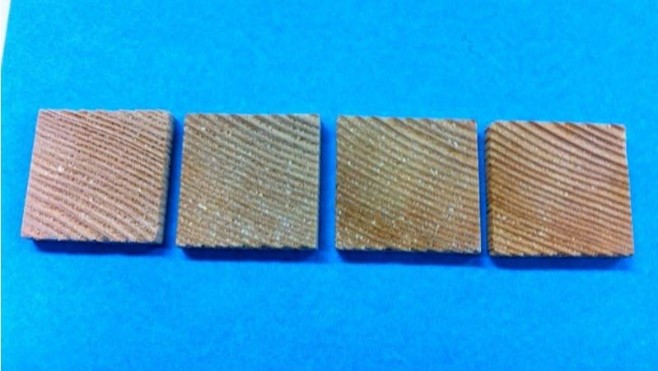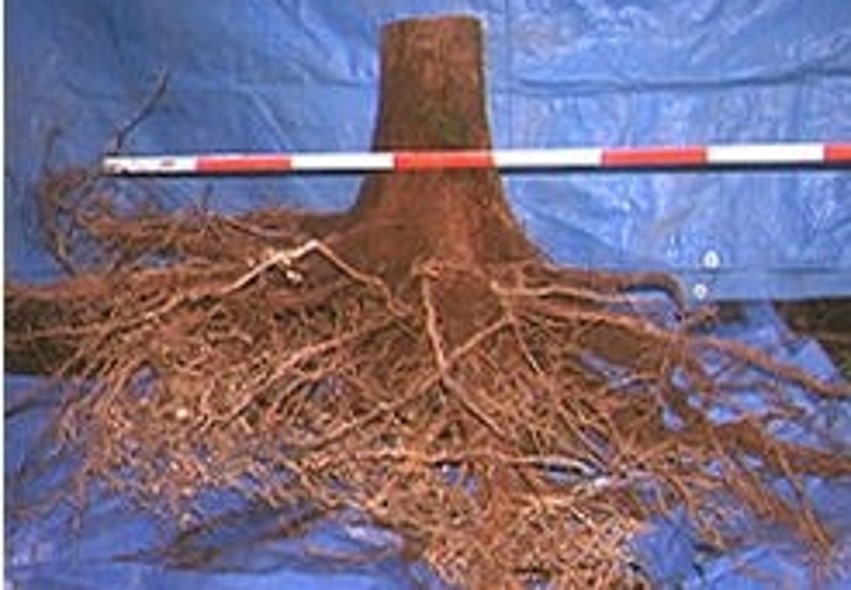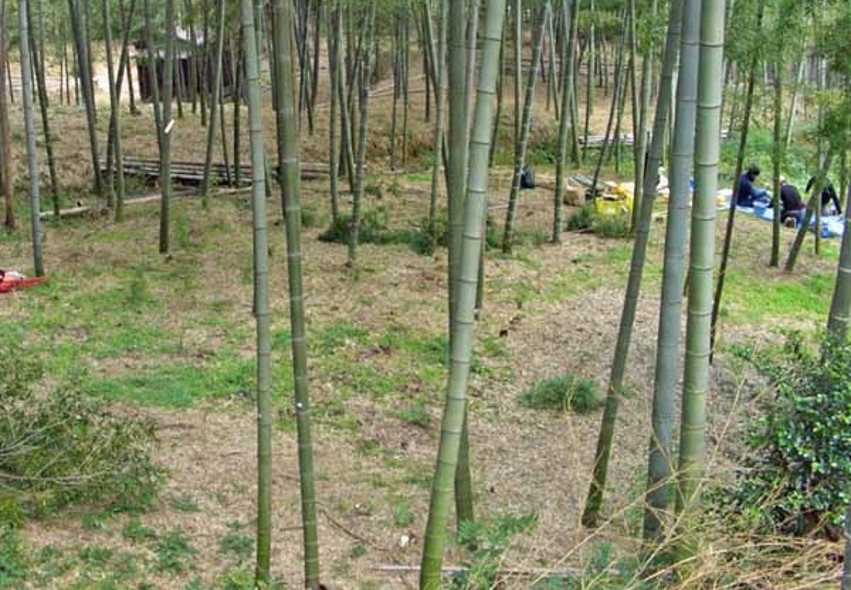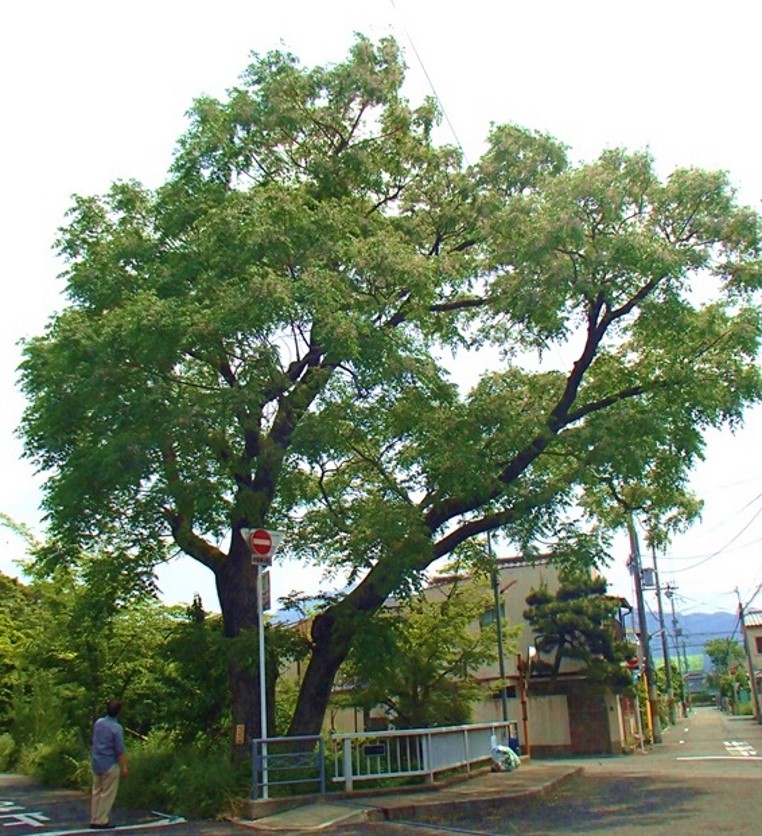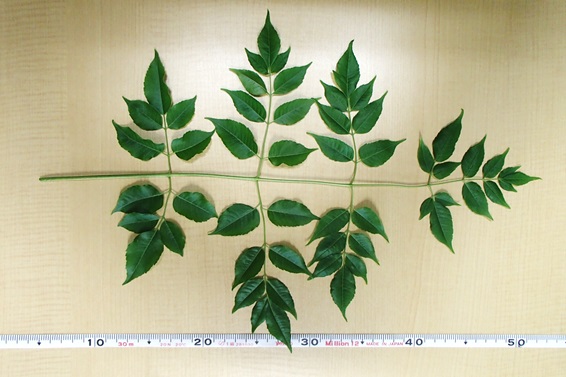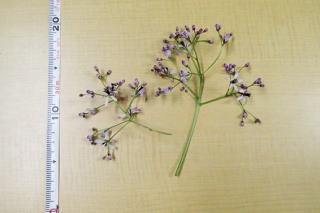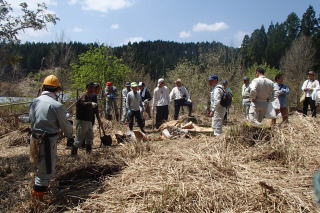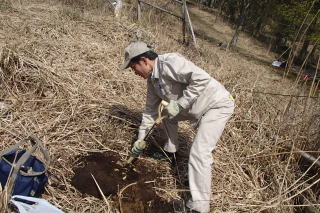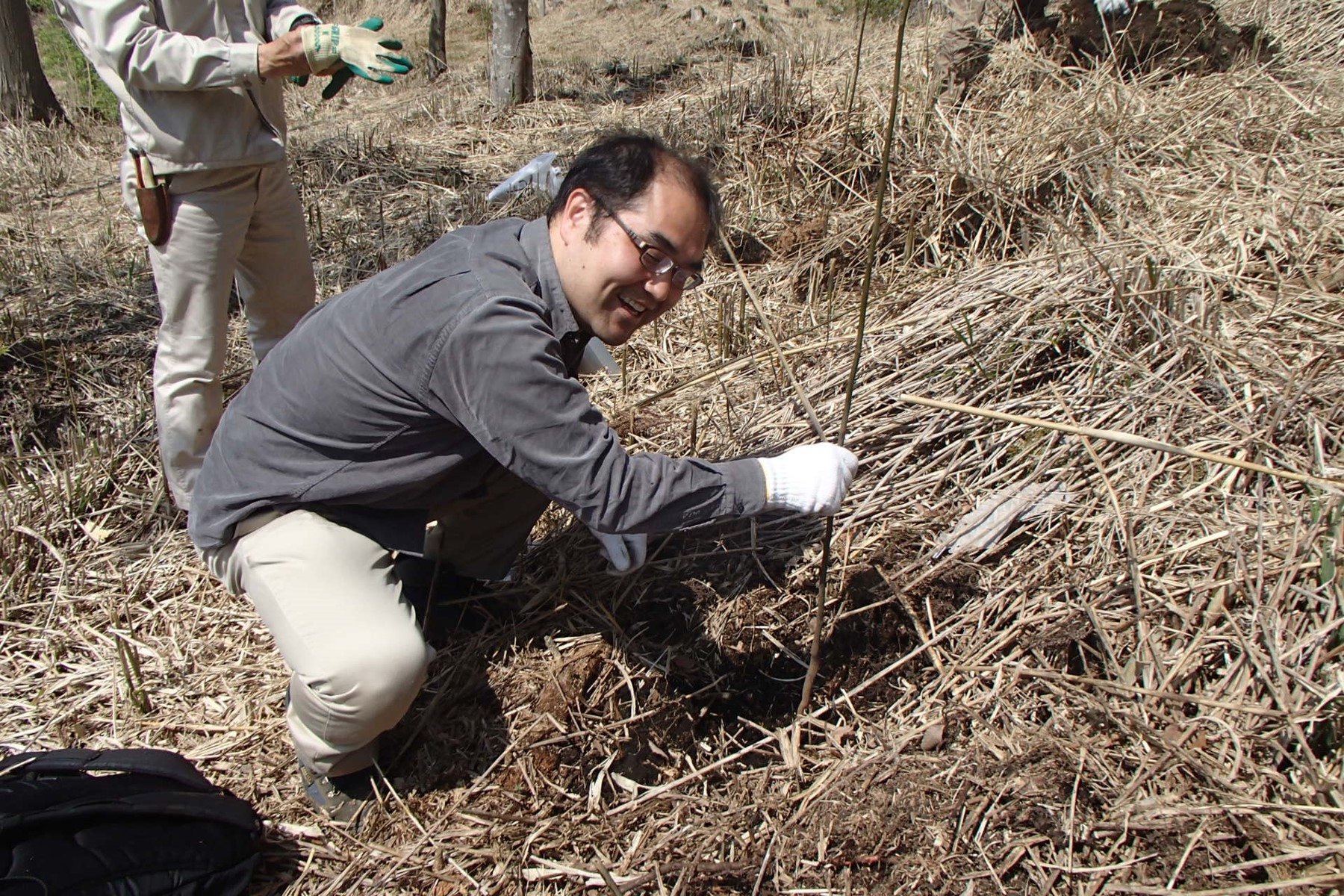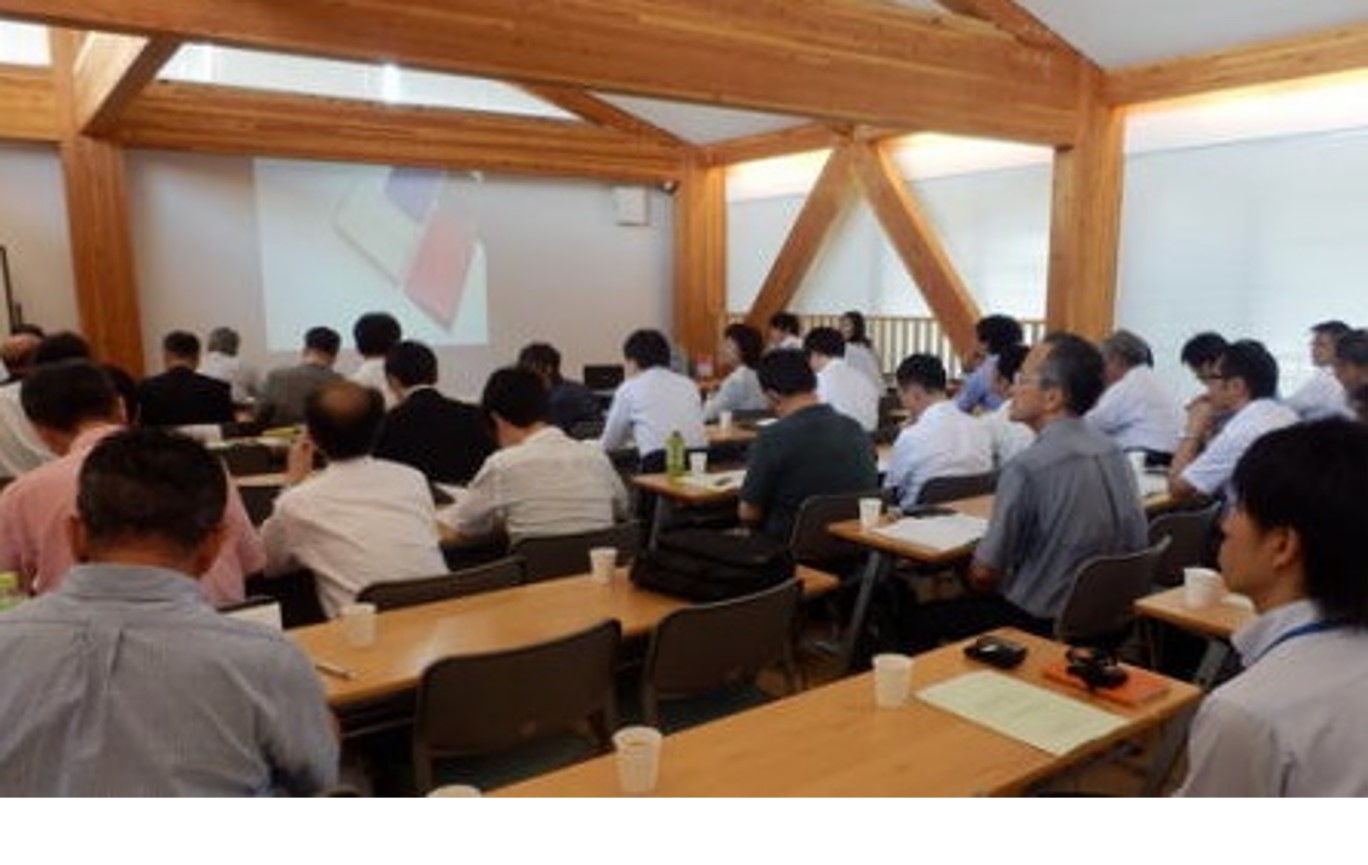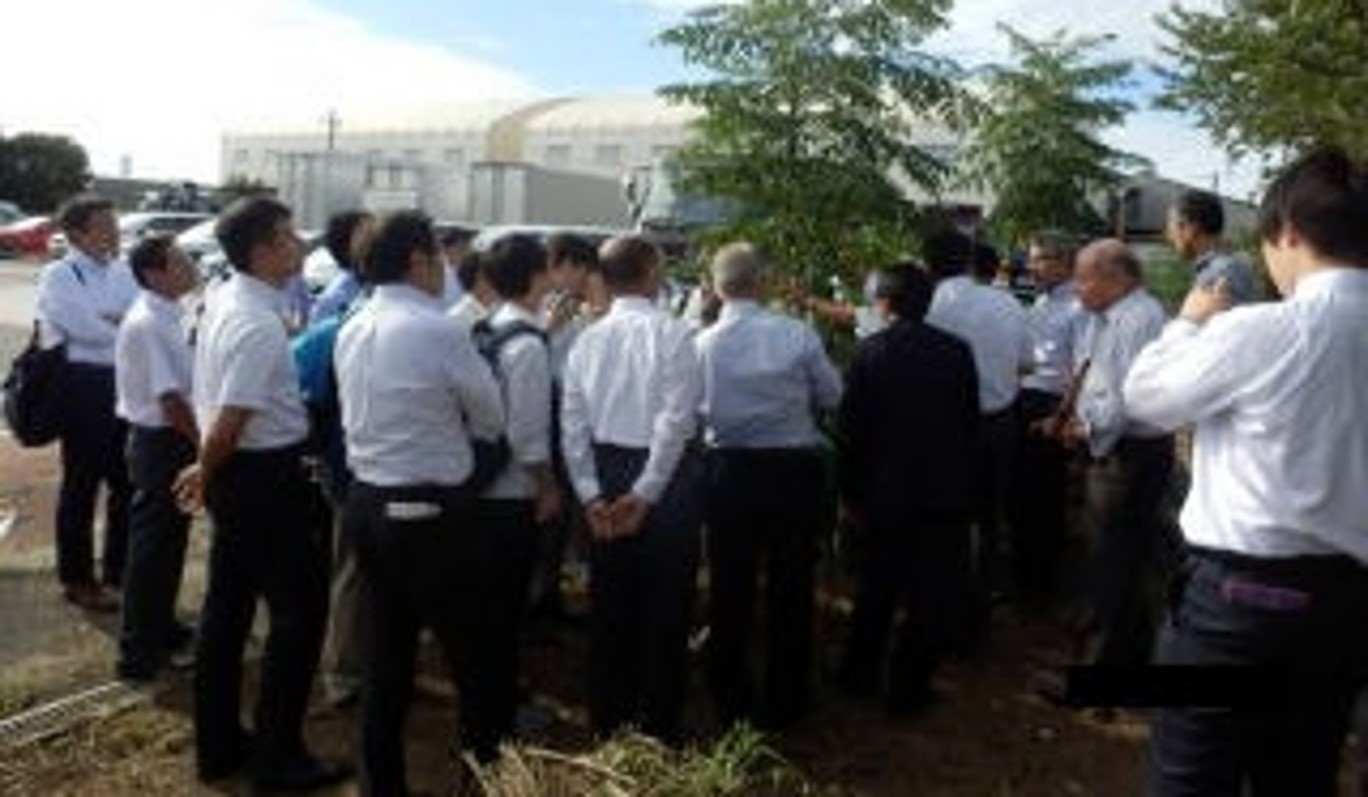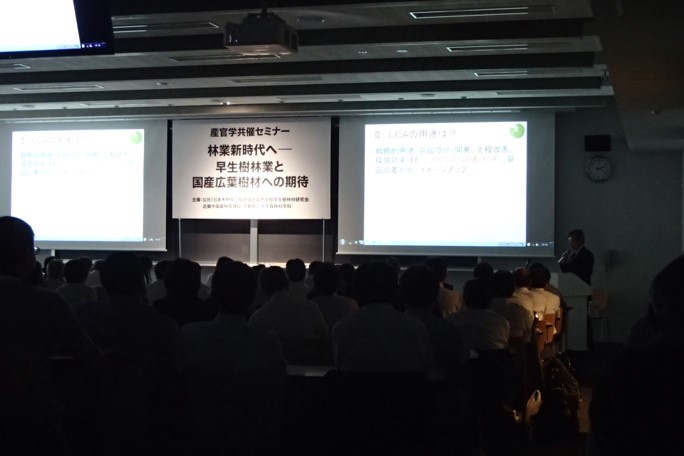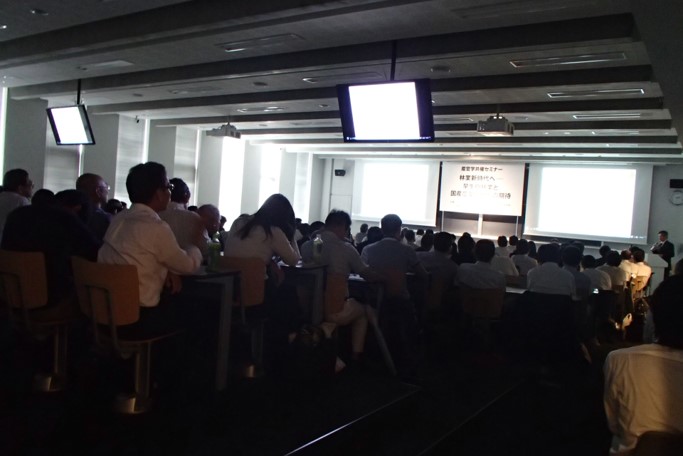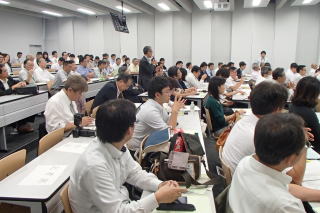Effective use of woody biomass

Wood is used for a variety of purposes, but it must be strong, rot-resistant, and easy to use. For such applications, rare wood from natural forests is often used. Once a natural forest has been cut down, it is very difficult to regenerate it. On the other hand, timber from plantation forests is not easy to use because it rots easily, etc., so it is not logged and is left in forests and is falling into disrepair. It is important to improve this situation and create a sustainable society that makes effective use of wood resources while maintaining the health of both natural and plantation forests. Our laboratory produces useful compounds from unused woody biomass, such as sawdust, and treats wood from plantation forests using these components as raw materials to produce modified wood that has the same performance as wood from natural forests. The resulting modified wood is a 100% natural material that contains no fossil-derived compounds. By using this modified wood in the urban areas where we live, we can expect the healthy continuation of plantation forests, protection of natural forests, symbiosis of cities and forests, utilization of natural materials, sustainable society and cities, decarbonized society, and revitalization of local economies.
Ionic liquid treatment for the production of valuable compounds
from woody biomass
Ionic liquids, despite being salts, are liquid at or around room temperature, have excellent solubility, and extremely low volatility, making them an ideal solvent for chemical reactions without generating harmful gases. Much attention has been paid to ionic liquids as a reaction solvent in recent years due to these unique properties. In our laboratory, we are effectively converting the constituents of woody biomass, namely cellulose, hemicellulose, and lignin, into useful biofuels and biomaterials through chemical conversions using ionic liquid reaction systems.
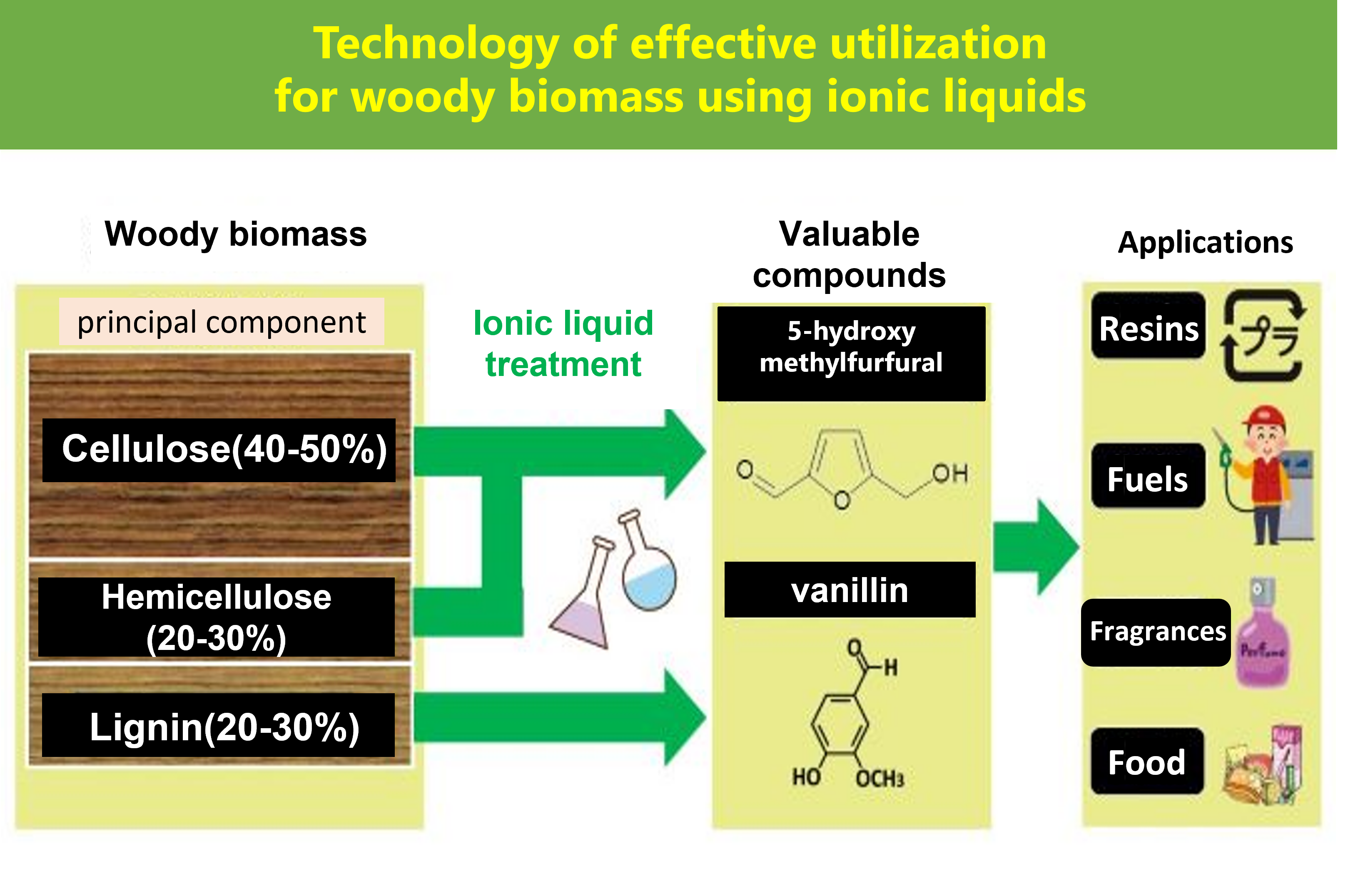
We are also conducting research on the selective production of vanillin from lignin. Vanillin is widely used as a flavoring agent and an intermediate for pharmaceuticals. However, the vanillin currently produced is mainly derived from fossil resources, and vanillin derived from lignin is hardly produced. Therefore, our laboratory is conducting research to achieve selective vanillin production from lignin.
References
- Toru Kanbayashi, Hisashi Miyafuji (2014) Raman microscopic analysis of wood after treatment with the ionic liquid, 1-ethyl-3-methylimidazolium chloride, Holzforschung, 69(3),pp 273-279.
- Emiko Ohno, Hisashi Miyafuji (2014) Production of disaccharides from glucose by treatment with an ionic liquid, 1-ethyl-3-methylimidozolium chloride, Journal of Wood Science, 61(2), pp 165-170.

